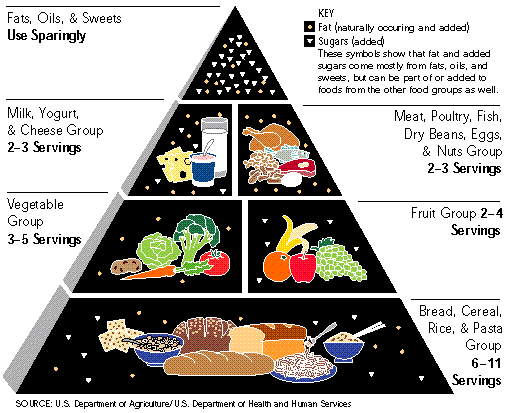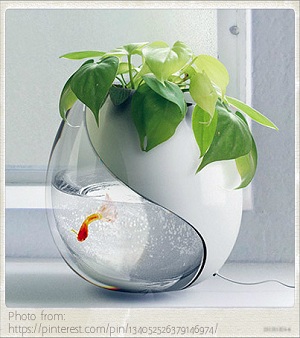In Korea, there is a saying "gimjang (kimchi for winter use) is half of one's winter provisions." No matter how sumptuous a banquet may be, a banquet spread without kimchi is unimaginable. Just like rice, another staple, kimchi is an indispensable food to all Koreans, rich and poor alike.
Since the Joseon Dynasty, preparing kimchi for the winter was an enormous domestic event. As many as 100-150 cabbages were prepared at once. As gimjang season approached, relatives and neighbors would consult with each other to avoid the overlapping of gimjang days among different families. In gimjang season, it was customary to help each other out by lending a hand to one another. However, over time, and in recent decades in particular, buying ready-made kimchi ceased to be unusual or odd. There is a book from the old days that mentions that depending on others for kimchi and jang (soy sauce and bean paste) was embarrassing. InJoseonmussangsinsigyorijebeop (a cookbook from 1943), it says, "To Koreans, kimchi is next to rice. No matter how sumptuous a feast may be, it cannot be complete without kimchi. Our palate is also accustomed to kimchi; it cannot go without it. It is indeed precious. Among things we ask of others, asking for jang and kimchi is a huge embarrassment."
History of kimchi
Kimchi was created after people began farming and producing grains as a staple of their diets. When vegetables, which couldn't be preserved, were pickled in salt or mixed with soy sauce, bean paste or spices, new tastes and aromas were created and storage became possible. This is none other than kimchi.
The kimchi of the Goryeo Dynasty probably did not contain salted fish or meat because chili was not available yet. Although the term "kimchi" was used, it must have been different from today's kimchi: vegetables sprinkled with salt, mixed with spices such as garlic and preserved. It would be in the form of dehydrated vegetables soaked in salty water or placed in ample salty water like dongchimi (watery radish kimchi). This was given the unique name of chimchae, which later evolved to become timchae, dimchae, and kimchae, and then finally "kimchi" as we know it today.
Ingredients of kimchi
Geographically, Korea stretches from south to north, and there is great variation between the foods of the southern and northern regions.
In the northern region, because of the lower temperatures, less salt was used and the spices were light and mild, which allowed the preservation of the freshness of vegetables. On the other hand, the food of the southern region is saltier. Simply adding a great deal of salt would not be very palatable, so salted fish was often used or meat stock was added. In particular, since salted fish was often used, sufficient garlic, ginger and chili powder were added to offset the smell of salted fish and to prevent the kimchi from becoming overly fermented by the salted fish. A paste made of glutinous rice was also mixed into kimchi to create the thick and rich taste of fermentation. In the Gyeongnam and Honam areas, salted anchovies are mostly used, while the central region favors salted croakers and shrimp. On the eastern coast, hairtail and mackerel are used in kimchi. Therefore, the kimchi of the northern region is watery, mild and fresh while that of the southern region has a reddish color, a stronger flavor and almost no liquid. The cabbage and juice of kimchi made in the central region is tinted with clear, pinkish red, like a bashful bride.
In spring, summer and fall, kimchi is made with the vegetables available in each season, such as young radish, young cabbage, cucumber and leek. Although radish and cabbage are the main ingredients of kimchi, various other greens and spices such as chili, scallions, garlic and ginger and salted fish are added. Whole cabbage kimchi is the most common, universal kimchi today.
Types of kimchi
Kimchi is relatively easily prepared without requiring a long fermentation period. There are a variety of kimchis: nabak kimchi(radish water kimchi), oi sobagi (stuffed cucumber kimchi), yeolmu kimchi (young summer radish kimchi), gat kimchi (leaf mustard kimchi), pa kimchi (green onion kimchi), yangbaechu kimchi (western cabbage kimchi), gul kkakdugi (diced radish kimchi mixed with oysters), and others.
In order to ensure a supply of vegetables in the cold winter, whole cabbage kimchi, bossam kimchi (wrapped kimchi), dongchimi (watery radish), godeulppaegi kimchi (Korean lettuce kimchi) and seokbakji, which can be preserved for a long period of time, are prepared. In addition, the ingredients and spices, recipes and preparation time vary greatly depending on the region, customs, preference and season, and accordingly, its flavors are tremendously diverse.
Although somewhat less common than regular cabbage kimchi, one of the main types of kimchi for gimjang was seokbakji. It was prepared by mixing slices of salted cabbage, radish and cucumber with salted fish.
In particular, in the royal court, jeotgukji, songsongi and dongchimi were always placed at the table of a king. Songsongi was called kkakdugi (diced radish kimchi) by commoners, but lady attendants in the palace didn't pronounce fortes and spoke softly without opening their mouths very wide, so they called it songsongi. Jeotgukji is a watery cabbage kimchi that contains a lot of salted fish.
Among the various types of kimchi, there is jang kimchi, which is seasoned not with salt but with soy sauce. Radish and cabbage is cut into small chunks and pickled in soy sauce. They are then mixed with various spices, pear, chestnuts, pine nuts, manna lichens and shiitake mushrooms and ample water is added. This was prepared mostly by the royal court or wealthy families in the Joseon Dynasty. It was not a common food due to the luxurious ingredients, but it was served with a bowl of rice cake soup on New Year's Day or at a formal banquet. Well-prepared gimjang was seokbakji. It was prepared by mixing slices of salted cabbage, radish and cucumber with salted fish.
In particular, in the royal court, jeotgukji, songsongi and dongchimi were always placed at the table of a king. Songsongi was called (diced radish kimchi) by commoners, but lady attendants in the palace didn't pronounce fortes and spoke softly without opening their mouths very wide, so they called it songsongi. Jeotgukji is a watery cabbage kimchi that contains a lot of salted fish. Entre las diferentes clases de kimchi, elAmong the various types of kimchi, there is jang kimchi, which is seasoned not with salt but with soy sauce. Radish and cabbage is cut into small chunks and pickled in soy sauce. They are then mixed with various spices, pear, chestnuts, pine nuts, manna lichens and shiitake mushrooms and ample water is added. This was prepared mostly by the royal court or wealthy families in the Joseon Dynasty. It was not a common food due to the luxurious ingredients, but it was served with a bowl of rice cake soup on New Year's Day or at a formal banquet. Well-prepared jang kimchi was a great delicacy as the color and flavor of soy sauce created a perfect harmony.
On a cold winter day, it is a great joy to sit in a warm room heated by ondol (traditional Korean room) and enjoy a bowl of dongchimi with crushed ice floating on top. There is a proverb that says "nobody is willing to offer a piece of rice cake, but you are already sipping kimchi juice" (similar to "don't count your chickens before they hatch"). Watery dongchimi is a perfect accompaniment to rice cake. Although dongchimi is a simple kimchi made of radish fermented in salty water, various spices, fruits such as pear and citron, leaf mustard and seaweed are added to enhance its flavor and smell. In order to prepare dongchimi, small and nicely-shaped radishes must first be selected. Then, their stems are removed and the radishes are carefully washed. After salting them evenly by rolling the radishes in salt, they are neatly placed in a jar and stored overnight. The white part and roots of a green onion and ginger and garlic are sliced thinly and combined in a small sack before placing it in the jar. Then, salted water is poured into the jar and fermented chili is added. It is ready to eat after about ten days. When pear, citron, seaweed or leaf mustard is added, it smells better and tastes particularly refreshing.
Koreans don't just eat kimchi on its own; there are also various dishes that can be prepared with kimchi, such as kimchi-jjigae(kimchi stew) and pan-fried kimchi. Kimchi stew, made of overly fermented kimchi and pork, and kimchi pancakes, which is made by mixing slices of kimchi with a flour dough and pan-frying it, have also become major dishes of Korea.
As a naturally fermented food, kimchi is rich in vitamins and minerals. Supplementary ingredients such as garlic, ginger and chili also provide various nutrients. Kimchi also has a high dietary fiber content and stimulates the bowels. It also helps lower sugar and cholesterol levels in the human body. Kimchi is a healthy food that helps promote the body's physiological functions and that can prevent geriatric diseases such as diabetes, heart disease and obesity.
Recently, many Asians in Japan and Taiwan have been enjoying Korean kimchi. We all hope kimchi, which is a good representative of Korea's profound culture and is highly nutritious, will continue to spread around the world.

 Introduction To Of Some Lower Cholesterol Foodstuffs
Cholesterol is a fat-like element contained in the physique
Introduction To Of Some Lower Cholesterol Foodstuffs
Cholesterol is a fat-like element contained in the physique
 The Simplest Way To Lessen Your High Cholesterol By Natural Means
High-cholesterol is a major variable inside the countrywide
The Simplest Way To Lessen Your High Cholesterol By Natural Means
High-cholesterol is a major variable inside the countrywide
 Starting Up An Aquaponics Set Up From See The Easy Way
Planting seeds in your aquaponics system can be a lot simpl
Starting Up An Aquaponics Set Up From See The Easy Way
Planting seeds in your aquaponics system can be a lot simpl